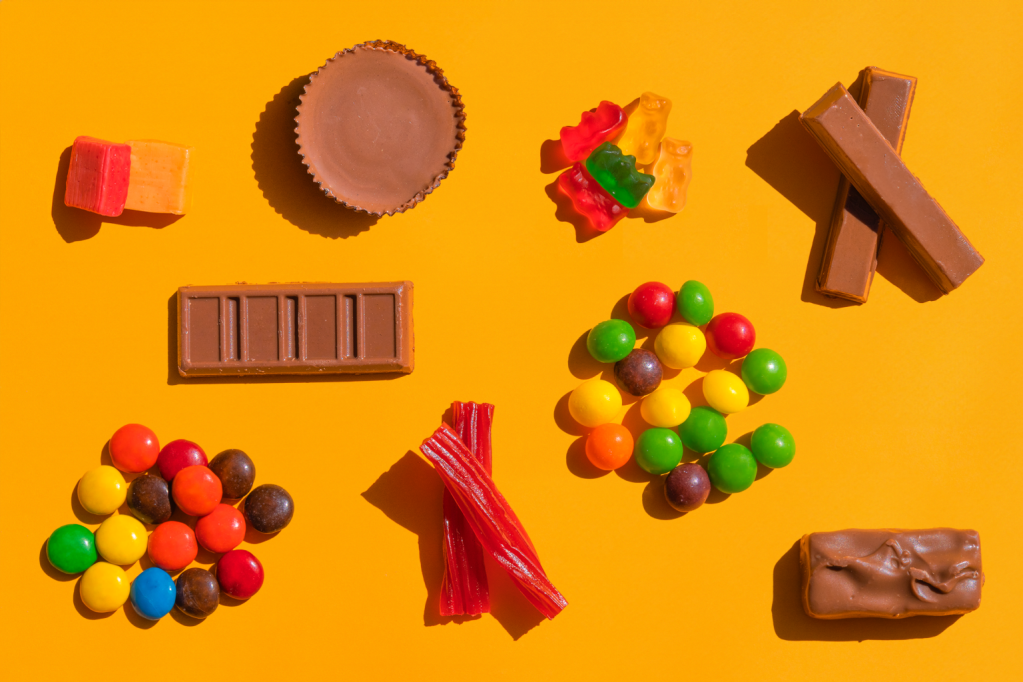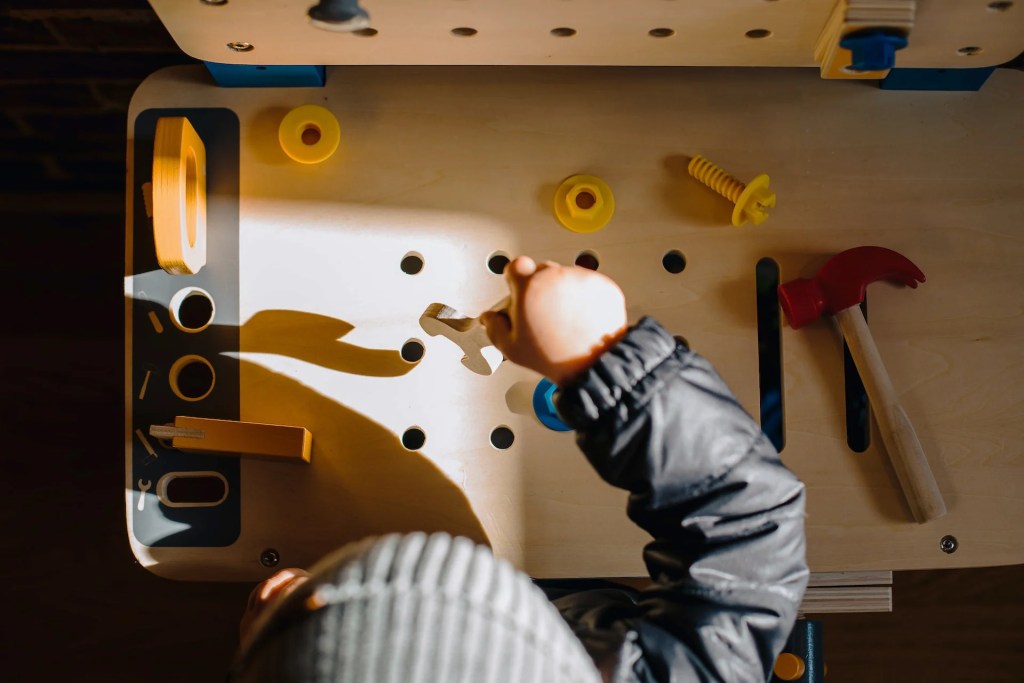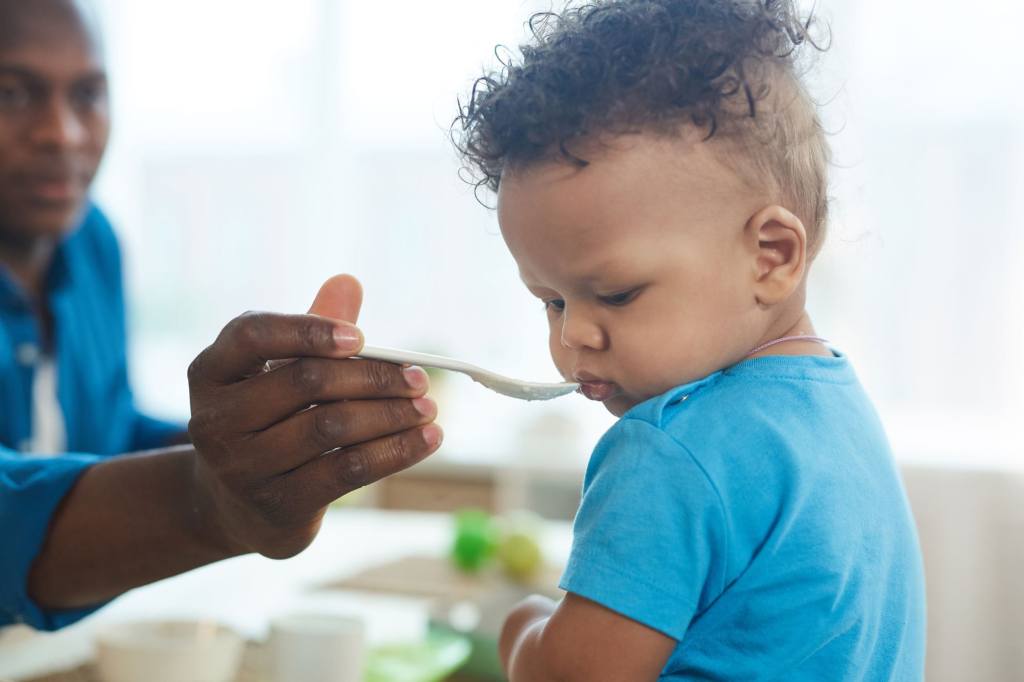Your cart is currently empty!
Congratulations are in order as you’ve made it through half a year! It’s all happening. Fine and gross motor skills are continuing to develop, and you may see your baby transfer an object from one hand to the other.
Here’s What You Need To Know:
- Around 6 months old is when your baby can start eating solid foods.
- They are visibly showing emotion, ranging from sad to content to outright joyous.
- Your baby is beginning to show bits of independence and personality.
True To Themselves:
At this age your baby is visibly showing emotion, ranging from sad to content to outright joyous. They will likely express displeasure when playtime stops, and are beginning to show bits of independence and personality.
They’re more likely to turn their head when you call their name. They’re also paying closer attention to the facial expressions of others; crying, whining, laughing, and squealing are all part of the emotional rollercoaster you will witness, as they begin to imitate the world around them.

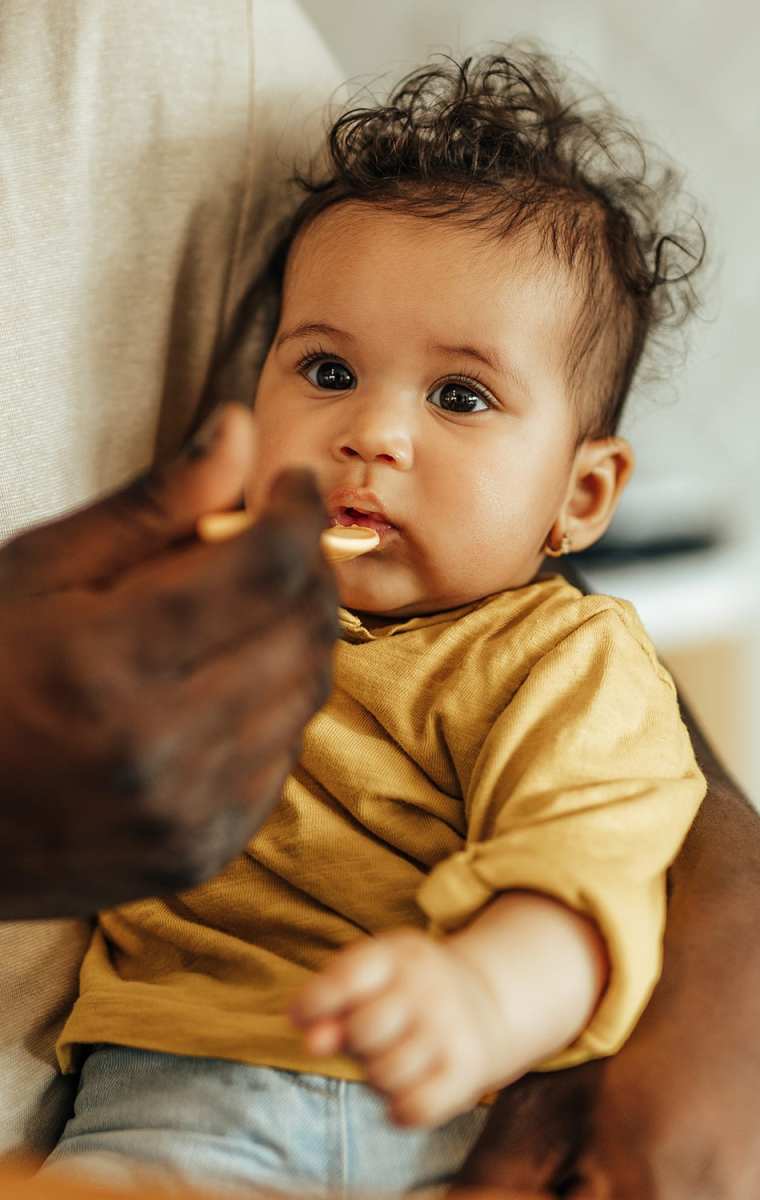
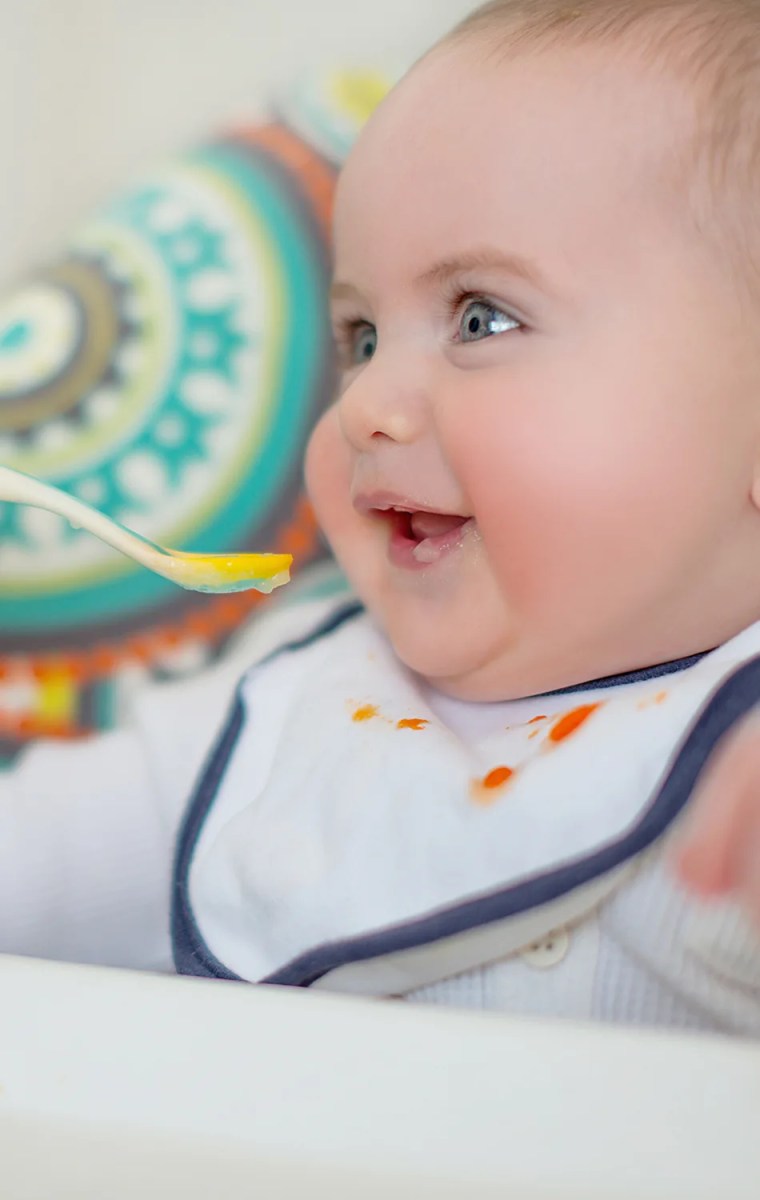

1. Your Baby’s Brain
Your baby is beginning to understand complex emotions, which can end up overstimulating them. If you notice them turning their head from you, it might be because things are too emotionally intense for them. Other cues include: arching their back, closing their eyes, startling, yawning, or crying.
If your baby appears overstimulated, try and slow down and focus on what they might be telling you. Relax your body and drop your shoulders. Turn the lights down if you can. Stay off your phone so that blue light doesn’t stimulate them further. Pat or stroke them gently, and if they are calm you can try and leave the room. Babies don’t have language to tell us that they need space, but that doesn’t mean it’s not nessessary.
2. Your Baby’s Eyes
Your little one can see farther away (several feet or more) than just a few months ago. They can focus without going cross-eyed and can tell the difference between colors.
You may see signs of the beginning of joint attention, which is your baby’s ability to coordinate their attention with yours. Now that they can see farther, they will likely begin to follow your gaze and pay attention to what you are looking at. They might also follow a ball as it rolls.
3. Your Baby’s Muscles:
According to the American Academy of Pediatrics, this is a good time to let your baby use spoons and their hands to feed themselves. Likewise, babies are encouraged to drink from a sippy cup starting at 6 months of age. This takes immense coordination between their brain and body.
Your little one is also learning how to sit up. (If they haven’t already) Let them try and fail and keep a few pillows nearby, to break their fall.
4. Your Baby’s Skin:
What’s this flaky stuff on my baby’s head? Skin issues like cradle cap (AKA seborrheic dermatitis) usually present within the first few weeks of life and can recur for up to 6 months. (Up to 70 percent of infants experience cradle cap within their first three months.) The flaky scales can also show up in the eyebrows, groin, armpits, ears, and eyelids. If your baby experienced cradle cap you are likely in the home stretch. No one knows 100 percent what causes cradle cap, but contributing factors include: a yeast infection, a weakened immune system, a bacteria imbalance in the gut, elevated material hormones, and nutritional imbalances.
Look Who’s Talkin’
When it comes to language, canonical babbling has taken shape. These are the vowels and consonants, often in repetition. Think: da da da da and ma ma ma ma.
Important Nutrients
Focus on foods rich in magnesium, calcium, and choline which help both the muscles and regions of the brain controlling movement develop. Offer iron rich foods with most meals. These include: green leafy veggies, peas, sweet potatoes, apricots, legumes, and meat.
A deficiency in biotin, zinc, B6, selenium, or manganese can all contribute to cradle cap. Squash is a great easy-to-digest food for infants and is high in vitamin C, manganese, and potassium. Bananas are easy to mash and are a great source of vitamin B6, manganese, and potassium. Zinc is a top mineral for boosting immunity. Legumes like chickpeas, lentils, and beans are also very good sources of zinc.
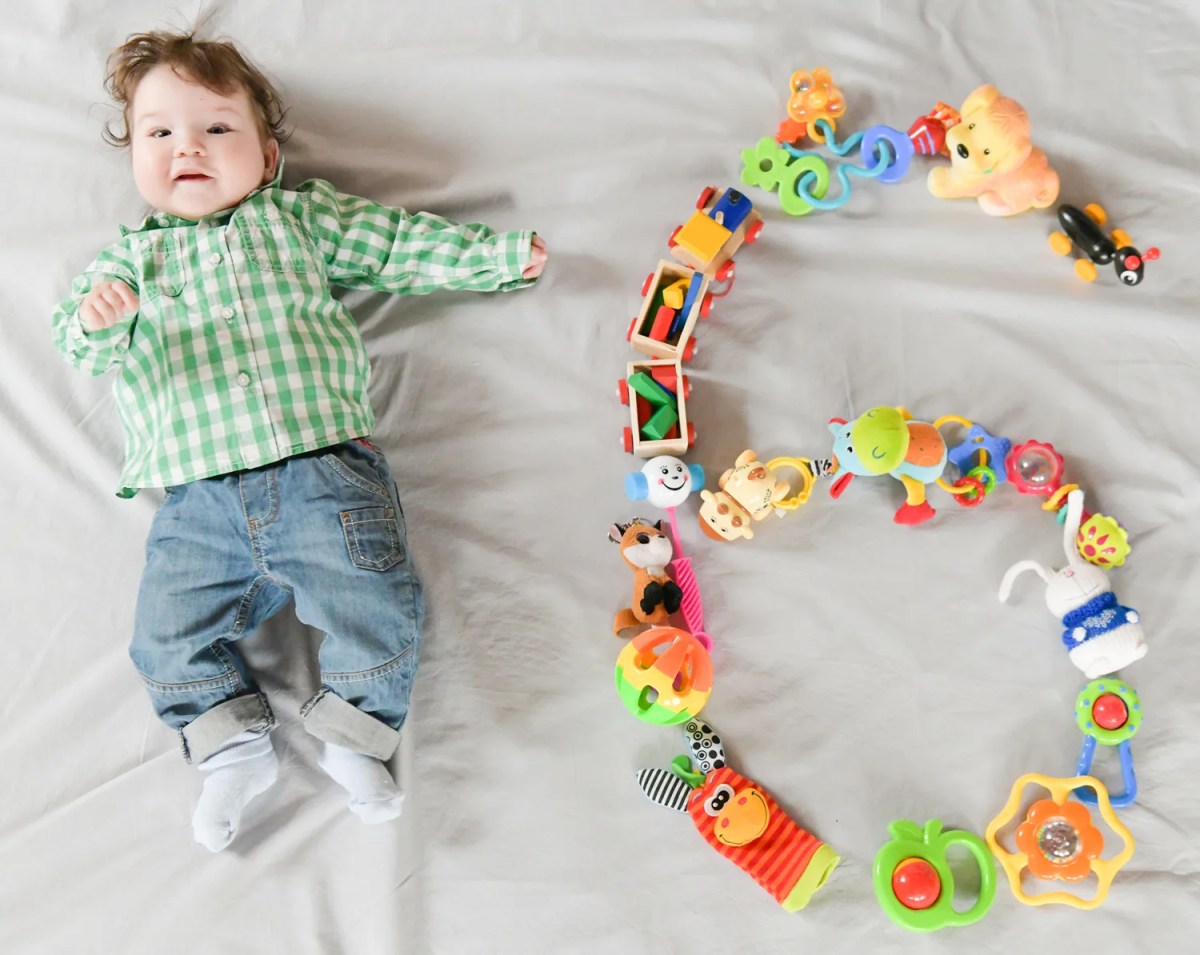
Summary
This is a good time to change the scenery, especially if your baby has been looking at the same mobile or picture.
Large, colorful picture books are a great idea, as is taking a walk around your neighborhood. Your little one will enjoy looking at all the stimuli.



